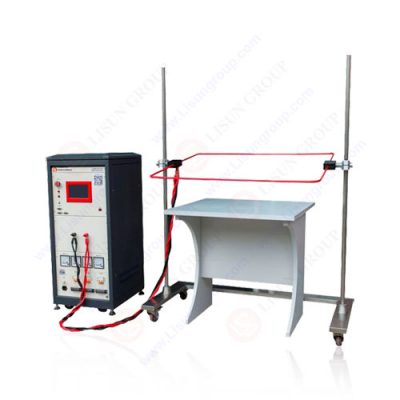

Abstract
In the rapidly advancing field of electronic product development, electromagnetic compatibility (EMC) has become an essential concern. One of the critical tests in ensuring that electronic devices can withstand electromagnetic interference (EMI) is exposure to power frequency magnetic fields, typically at 50 Hz or 60 Hz. This paper explores the significance of power frequency Magnetic field simulation in the design and testing of electronic products, focusing on immunity characteristics and the testing standards that guide product development. Special attention is given to the LISUN PFM61000-8A Magnetic Field Generator as a tool for simulating magnetic fields in line with international EMC standards. The paper includes specific testing requirements, key design considerations, and best practices, supported by detailed tabular data and real-world case studies.
1. Introduction
As electronic devices become smaller and more integrated, their vulnerability to electromagnetic interference (EMI) has increased. Power frequency magnetic fields, typically operating at 50 Hz or 60 Hz, are a prevalent source of EMI in industrial, commercial, and residential environments. To ensure that electronic products function reliably in such environments, manufacturers must assess and validate their immunity to these low-frequency magnetic fields through power frequency Magnetic field simulation.
This paper delves into the testing requirements for power frequency magnetic field immunity, focusing on immunity characteristics necessary for product design and the role of advanced test equipment such as the LISUN PFM61000-8A Magnetic Field Generator in simulating these conditions.
2. Background and Importance of Power Frequency Magnetic Fields
2.1 Nature of Power Frequency Magnetic Fields
Power frequency magnetic fields are low-frequency alternating magnetic fields generated by electric currents flowing through conductors, transformers, and power systems. In most regions, these fields oscillate at 50 Hz (Europe, Asia) or 60 Hz (North America). While these fields are not typically hazardous to humans, they can induce unwanted currents and voltages in sensitive electronic circuits, causing malfunction, data corruption, and even permanent damage.
These magnetic fields are most commonly found near:
• Power distribution lines
• Electrical motors and transformers
• Electric appliances
• Industrial machinery
For electronic devices to operate reliably, they must demonstrate resilience to these electromagnetic disturbances.
2.2 Why Power Frequency Magnetic Field Simulation is Critical
Power frequency Magnetic field simulation is essential for replicating real-world electromagnetic environments in controlled settings. By simulating these magnetic fields, engineers can assess the susceptibility of devices to electromagnetic disturbances and make necessary design modifications to improve immunity. Testing under simulated conditions ensures that products meet international EMC standards, which is critical for market approval and consumer safety.
3. Standards and Test Methodologies
3.1 International EMC Standards
Several international standards govern the immunity of electronic products to power frequency magnetic fields. Key standards include:
Standard
Description
IEC 61000-4-8
Immunity to power frequency magnetic fields (50 Hz or 60 Hz)
IEC 61000-6-1
EMC immunity requirements for residential, commercial, and light industry
IEC 61000-6-2
EMC immunity requirements for industrial environments
ISO 11452-8
Automotive EMC immunity testing methods for power frequency magnetic fields
These standards define the required magnetic field strengths, test conditions, and performance criteria for electronic devices exposed to low-frequency magnetic fields.
3.2 Test Setups and Testing Conditions
The IEC 61000-4-8 standard outlines the setup for power frequency magnetic field testing. The device under test (DUT) is placed in a magnetic field generated by a Helmholtz coil or similar magnetic field generator. The magnetic field strength, typically ranging from 1 A/m to 100 A/m, is adjusted according to the intended environment of the device.
Test Setup Overview:
Magnetic Field Strength
Test Duration
Field Frequency
Direction of Field
1–10 A/m
Continuous
50 Hz or 60 Hz
X, Y, Z
10–30 A/m
5 minutes
50 Hz or 60 Hz
X, Y, Z
30–100 A/m
1 minute
50 Hz or 60 Hz
X, Y, Z
The test duration and field strength depend on the product’s intended environment (residential, industrial, or commercial). Devices are tested in all three orthogonal directions (X, Y, and Z) to ensure thorough testing under different spatial orientations.
PFM61000-8A_Magnetic Field Generator
4. Immunity Characteristics in Electronic Product Design
4.1 Design Considerations for Magnetic Field Immunity
Designing electronic devices with immunity to power frequency magnetic fields involves several strategies, including:
• Shielding: Using magnetic shields (such as Mu-metal) to block external magnetic fields from affecting sensitive internal circuits.
• Grounding: Proper grounding and earthing of circuits to provide a safe path for induced currents.
• Differential Signaling: Using differential pairs for signal transmission, which helps reduce susceptibility to common-mode noise induced by magnetic fields.
• Component Selection: Using components with high immunity to low-frequency magnetic fields, such as magnetic field-resistant capacitors and inductors.
4.2 Testing Performance Criteria
The performance of the DUT is evaluated based on the following criteria during power frequency magnetic field exposure:
Criterion
Description
Criterion A
DUT operates as normal without degradation
Criterion B
Temporary degradation in performance, self-recovery
Criterion C
Temporary degradation requiring manual intervention
Criterion D
Permanent damage or failure of functionality
Most products aim to meet Criterion A, which indicates that the device can function as intended without any issues under the tested magnetic field conditions.
5. Power Frequency Magnetic Field Simulation Equipment
5.1 LISUN PFM61000-8A Magnetic Field Generator
The LISUN PFM61000-8A Magnetic Field Generator is an advanced test system designed to simulate power frequency magnetic fields for EMC testing. It complies with IEC 61000-4-8 and is capable of generating magnetic fields up to 100 A/m, suitable for testing various electronic devices. The equipment uses a Helmholtz coil or a solenoid coil to produce a homogeneous magnetic field in the testing area.
Key Features of the PFM61000-8A:
Feature
Specification
Frequency Range
50 Hz or 60 Hz
Magnetic Field Strength
Up to 100 A/m (adjustable)
Field Uniformity https://www.lisungroup.com/news/technology-news/power-frequency-magnetic-field-simulation-in-electronic-product-design-immunity-characteristics-and-testing-requirements.html


Comments
Post a Comment